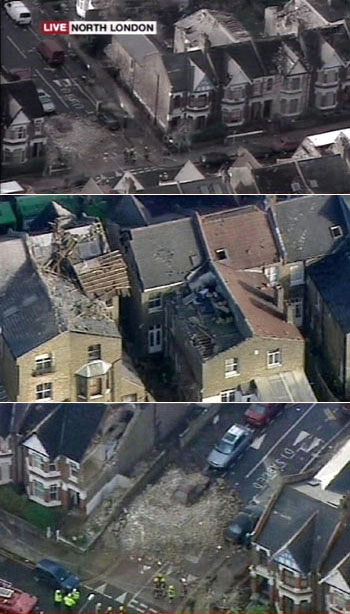It was a "genuine twister."
 [Images: From the Daily Mail].
[Images: From the Daily Mail].Although tornadoes of this kind are surprisingly frequent in the UK, the event should be taken, The Guardian suggests, as a "warning that such weather events are likely to increase in frequency because of global warming."
For instance:
- In July last year, a tornado in Birmingham damaged 1,000 buildings, causing millions of pounds of damage, while a tornado was reported just off Brighton, on the Sussex coast, this October. A mini tornado swept through the village of Bowstreet in Ceredigion, west Wales, last Tuesday. Terence Meaden, the deputy head of the Tornado and Storm Research Organisation, said the UK has the highest number of reported tornadoes for its land area of any country in the world... He added that the UK was especially susceptible to tornados because of its position on the Atlantic seaboard, where polar air from the north pole meets tropical air from the equator.
Warm winds and water vapor from the tropics will hit Arctic fronts outside Ireland, then move down toward the city... where the Tornadium, located perfectly at the vertex of converging streets, will suck all storms toward it, defusing their energy (and perhaps acting as a wind-power factory).
Anti-storm architecture. Or pro-storm architecture, for that matter.
What, after all, is the impact of urban design on meteorology?
And could a perfectly engineered great wall of high rises outside the city – each structure a honeycomb of valved passages – prevent all storms from reaching London...?
(See also Aurora Britannica, in which a superstadium full of ring magnets is proposed as a means to trap the Northern Lights in central London).
No comments:
Post a Comment